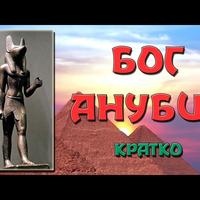Анубис, бог
Anubis Gott|Gott
Anubis god|god
Anubis|dios
Anubis, der Gott
Anubis, the god
Anubis, el dios
Anubis, le dieu
Anubi, il dio
アヌビス神
아누비스, 신
Anubis, de god
Anubis, bóg
Anúbis, o deus
Anubis, guden
Anubis, tanrı
阿努比斯神
阿努比斯神
Анубис – греческое имя бога, который в религии Древнего Египта, был связан с мумификацией и
||||ki|||Eski|||ilişkilidir||mumyalama ile|
|grecque||||||ancien|||était lié||momification|
Anubis|Greek|name|god|who|in|religion|Ancient|Egyptian religion|was|associated||mummification|and
|griechische||Gott|||Religion des alten Ägypten|alten|Ägypten||verbunden||Einbalsamierung|
Anubis is the Greek name of the god who, in the religion of ancient Egypt, was associated with mummification and
загробной жизнью. Чаще всего он изображался в виде псовидного животного или человека с собачьей
de l'au-delà|vie|le plus souvent|||était représenté|||canin|animal||||chien
jenseitigen|Leben||||wurde dargestellt|||hundähnlichen|||||Hundes
afterlife|life|more often|total||depicted|in|form of|canine-like|animal||human||dog-like
afterlife. Most often he was depicted as a canine animal or as a man with a canine
головой. Археологи полагают, что зверем-символом Анубиса был африканский золотой волк.
||pensent||bête|symbole|||||
|archaeologists|||beast|symbol|Anubis||African|golden|wolf
||||Tier||Anubis|||goldener|Wolf
head. Archaeologists believe that the beast-symbol of Anubis was the African golden wolf.
Как и многие другие древнеегипетские божества, Анубис имел различные роли в различных контекстах.
||||égyptiens anciens|||avait|différentes|rôles|||
||||ancient Egyptian|deities|Anubis|had|various|roles||various|contexts
Like many other ancient Egyptian deities, Anubis had different roles in different contexts.
Ещё во времена первой династии фараонов его называли защитником могил, но он был
||||||||protecteur|des tombes|||
||times||dynasties|pharaohs|||protector|tombs|||was
||||||||Beschützer||||
Back in the days of the first dynasty of the pharaohs, he was called the guardian of tombs, but he was also
и бальзамировщиком, участвующим в мумификации тела умершего. В период Среднего царства первой
|embaumeur|participant|||||||du Moyen|Royaume|première
|Balsamierer|||Mumifizierung|||||||
|embalmer|participating||mummification|body|deceased person|||Middle|kingdoms|
a embalmer, participating in the mummification of the deceased body. During the Middle Kingdom, in the first
половины 2 тысячелетия до нашей эры Осирис заменил Анубиса в его первоначальной роли повелителя
du|||||Osiris|a remplacé||||initiale||seigneur
halves|millennia|||era|Osiris|replaced||||original||lord
||||||||||ursprünglichen||Herrscher
half of the 2nd millennium BC, Osiris replaced Anubis in his original role as the ruler
подземного мира. Одной из главных функций Анубиса стало сопровождение мёртвых душ в загробную жизнь.
souterrain||||||||l'accompagnement|des morts|||au-delà|
underworld|||||functions|||guidance|dead|||afterlife|
||||||||Begleitung|||||
of the underworld. One of the main functions of Anubis was to escort the dead souls to the afterlife.
Во время суда Осириса он взвешивал тело покойного на весах подземного мира, определяя, будет ли тому
|||||vait|||||||déterminant|||
||trial|Osiris||weighed||deceased person||scales|||determining|||
During Osiris' trial, he weighed the body of the deceased on the scales of the underworld, determining whether the
позволено обрести вечную жизнь. Являясь одним из самых древних, наиболее часто изображаемых и
|obtenir|éternelle||étant|||||le plus||représentés|
allowed|gain|eternal||being||||ancient|||depicted|
is allowed to have eternal life. As one of the oldest, most frequently portrayed and
упоминаемых богов египетского пантеона, Анубис, однако, не играл почти никакой роли в мифах.
des mentionnés|||||||||aucune|||les mythes
der erwähnten||||||||||||
mentioned|gods|Egyptian|pantheon|||||||||myths
The gods of the Egyptian pantheon, Anubis, however, played almost no role in the myths.
Анубис изображался черным цветом, который символизировал и изменение цвета трупа после
|était représenté||couleur||symbolisait||changement||du corps|
|||||symbolized||change||corpse|
|||||||||Leichnam|
Anubis was portrayed in black, which also symbolized the color change of the corpse after
бальзамирования. Он был близко связан с Упуаутом, другим египетским богом,
embaumement||||lié||Upouat|||
Balsamierung||||||Upuaut|||
embalming||||||Upuat||Egyptian|god
of embalming. He was closely associated with Upuaut, another Egyptian god,
изображаемым в собачьем виде или головой собаки (с серым или белым мехом). Историки предполагают,
représenté|||||||||||fourrure||
depicted||dog-like|form|||||gray||white|fur|historians suggest|suggest that
|||||||||||Fell||
portrayed as a dog or a dog's head (with gray or white fur). Historians speculate,
что эти два религиозных персонажа были в итоге объединены. Женским аналогом Анубиса
||||personnages|||au final|unies|féminin|d'Anubis|
|||religious|characters||||merged|female|counterpart|
||||||||vereint|||
that these two religious characters were eventually combined. The female counterpart of Anubis
является богиня Инпут, а его дочерью – богиня бальзамирования Кебхут, изображаемая в виде змеи.
est|déesse||||fille|la déesse|de l'embaumement||représentée|||
|goddess|Input goddess|||daughter|||Kebhut|depicted as|||snake
||Input||||||Kebhut||||
is the goddess Input, and his daughter is the goddess of embalming Kebhut, depicted as a snake.

